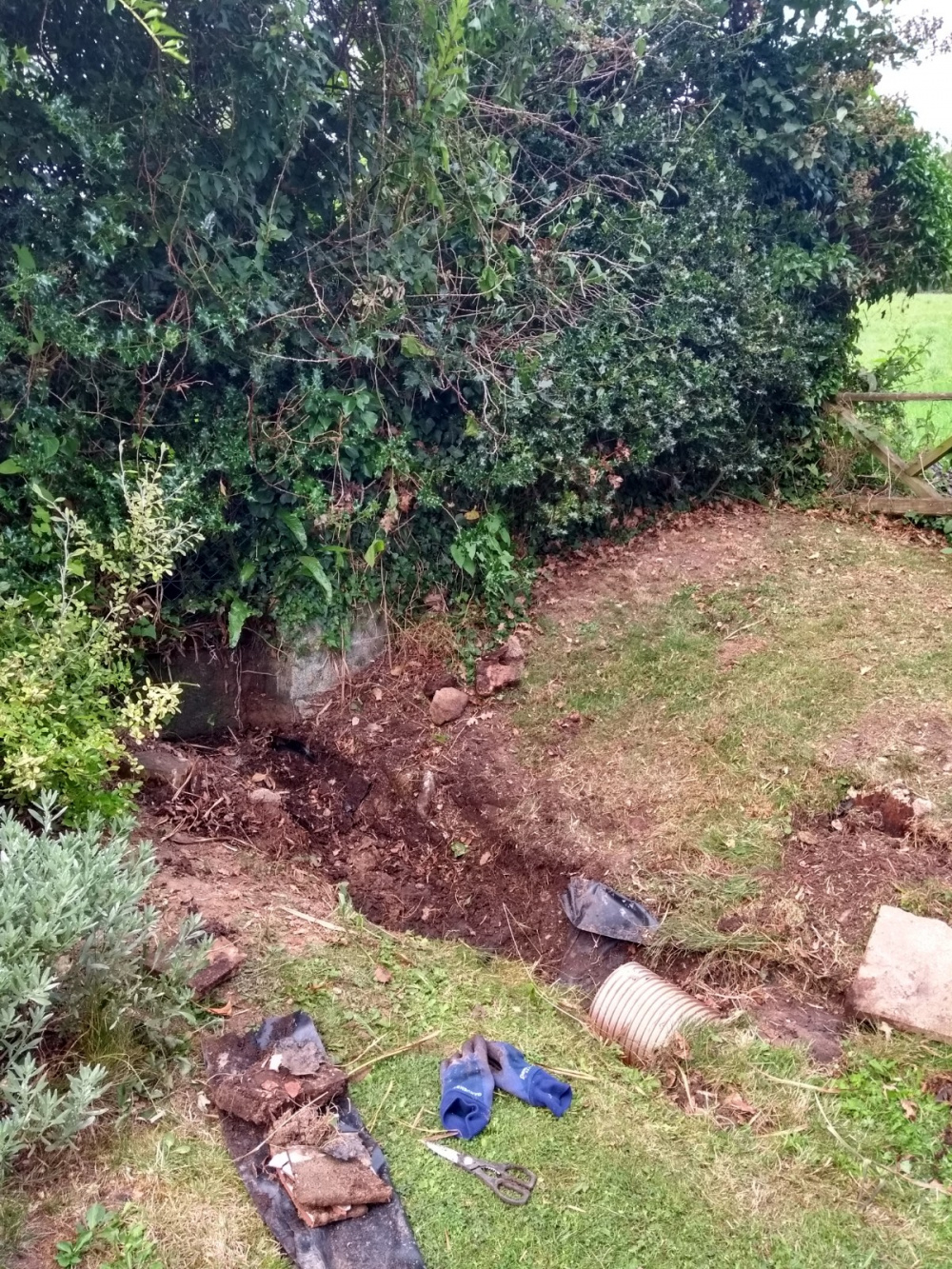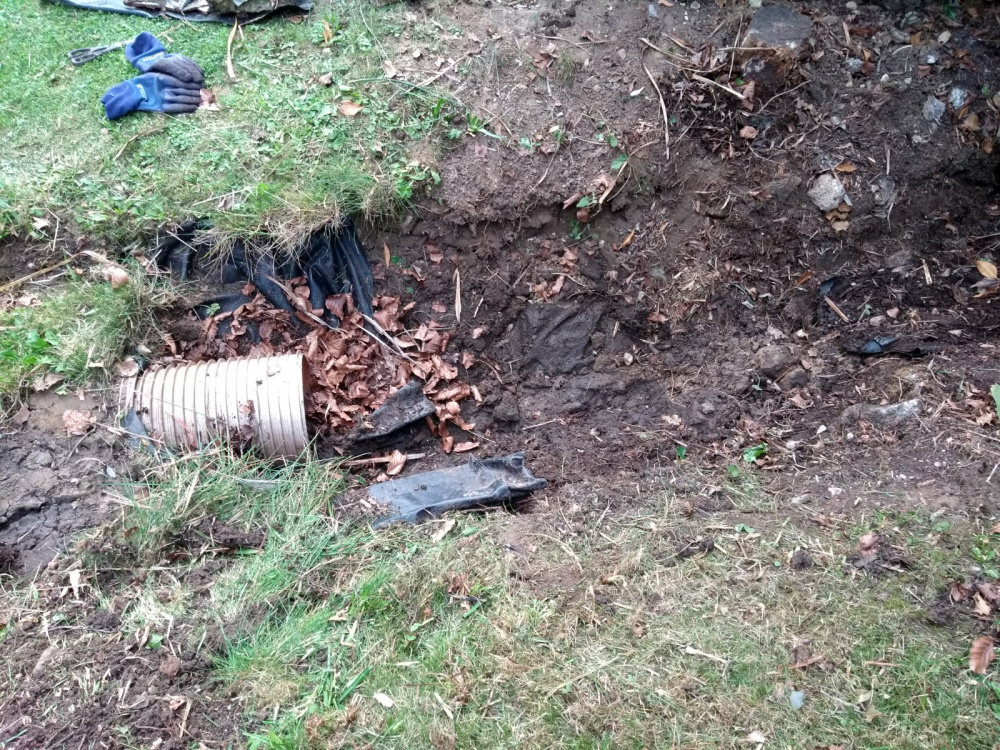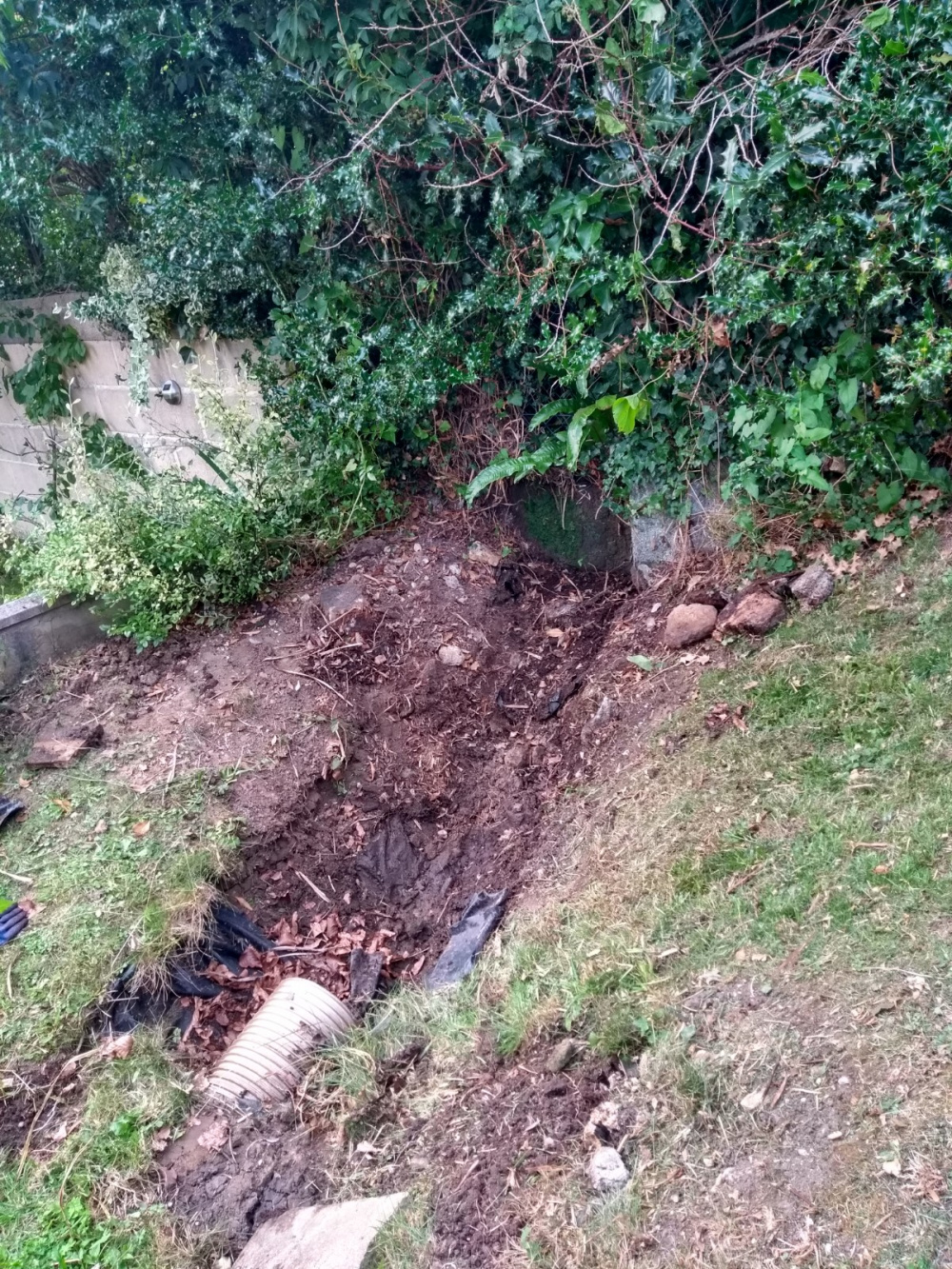This Forum will close on Wednesday 27 March, 2024. Please refer to the announcement on the Discussions page for further detail.
Seasonal brook/deep damp area - help for wildlife
I have a tiny brook ( actually much smaller than a brook) that runs into my garden from my neighbours garden. Neighbours have a concrete slab that ends at their boundary and the water trickles down a slab into my garden. The water is meant to trickle for 1.5 meters down a 40cm drop a then go in a pipe under the lawn and out into a drain at the end of the garden. This does not happen and I have uncovered many layers of plastic between the boundary and the pipe which I am pulling out, any water seems to go under the plastic not on top of it and the water just seeps around the pipe so we have a soggy patch of lawn in the winter. Sadly I do not have finance or skill to have the pipe pulled out and a lovely trickling brook properly reinstated. Instead I was hoping I could plant up the steep edges with some wildlife friendly plants to help stop the erosion and help the wildlife. The plants coming through from next doors garden on the boundary are holly, ivy and brambles! Any suggestions greatly received.





0
Posts
The answers will affect the kinds of plants you can try to make that corner beautiful and a refuge for wildlfe.
You'll need to clear some more of that plastic and maybe work in some well-rotted manure to improve fertility but you should be able to create something lovely and not too high maintenance.
In the sticks near Peterborough
https://www.rhs.org.uk/advice/profile?pid=356